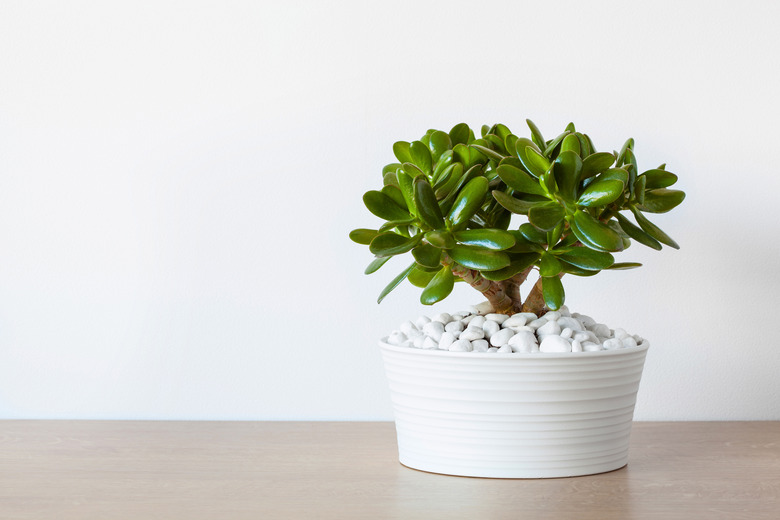How To Water A Jade Plant
Jade plants (Crassula ovata, USDA zones 11-12) are resilient and beautiful succulents, but learning about care, such as how to water a jade plant and jade pruning techniques, is important to help them thrive. While consistent watering is important, jade plants can quickly become overwatered and die due to root and stem rot. Learn when and how to water your jade plant to keep the oval-shaped leaves green and beautiful.
Jade Plant Growing Conditions
Jade Plant Growing Conditions
Jade plants like bright light, but they don't do well in too much harsh, direct sunlight, which can burn their leaves. The ideal environment keeps the jade plants at room temperature between 65 and 75 degrees Fahrenheit. If you put the plant outdoors, it needs to come inside when the temperatures reach around 50 degrees.
These succulents need soil that drains well to keep them from getting too much moisture. Potting soil for succulents often provides the drainage you need. You can also use an all-purpose potting soil and add perlite using 2 parts soil to 1 part perlite. These soil options make it easier to give your jade plant the proper amount of water.
You also need a pot with efficient drainage holes to prevent the soil from retaining too much water. Jade plants like to be tight in the pot, so choose a container that's just slightly larger than the root ball.
Jade Plant Watering Needs
Jade Plant Watering Needs
As a succulent, a jade plant holds water in its leaves and stems. While they need regular water, plants can also die if you overwater them. Jade plants don't like to sit on overly damp soil.
Watering needs change with the season. Jade plants need the most water during the active growing season, particularly the spring and summer months. The plants often enter a resting phase in the fall and winter months, which means they don't need as much water during this time. If the plant is established and healthy, it might only need to be watered once or twice while it's resting.
Indoor plant care is slightly different than outdoor jade plant care. Indoor jade plants need regular watering since they don't get any rainwater. If you move your jade plant outdoors in warm weather, it gets some moisture from the rain. When you're in a rainy period, move the jade plant indoors or to a covered outdoor area to prevent it from getting too much water.
Frequency of Watering
Frequency of Watering
The frequency of jade plant watering can vary based on the plant's needs, such as the size of the plant, and the soil. Your jade plant might need to be watered once per week, or it might only need to be watered once per month. You want to wait until the soil mostly dries out before watering the plant again.
You can check on the plant's watering needs by feeling the soil. Stick your finger down into the soil to see if it's moist. When the top 1 to 2 inches of soil are dry, you can water the plant safely without waterlogging it, as long as the soil drains well. Check your plant weekly to see if it's ready for more water.
How to Water Jade Plants
How to Water Jade Plants
Since jade plants are sensitive to salt, use filtered or distilled water for best results to avoid the salt that can be in tap water. Water the plant at the base to avoid getting the leaves wet. Provide a deep watering when the soil is dry. Dump out any water from the pot saucer when you're finished with the watering. Leaving water in the saucer can damage the roots.
Indications of Watering Issues
Indications of Watering Issues
Your jade plant will show you physical signs if your watering is either too much or too little. A jade plant that needs more water often has shriveling leaves. The leaves might start showing brown spots, and they might drop off the plant prematurely.
If the plant is getting too much water, the leaves will feel squishy and seem waterlogged. You might notice blisters on the leaves to indicate it's being overwatered. Monitor the leaves to spot watering issues early before they cause damage to the plant.
